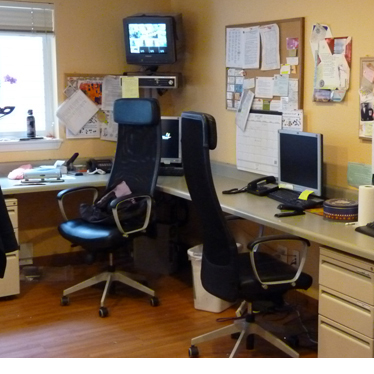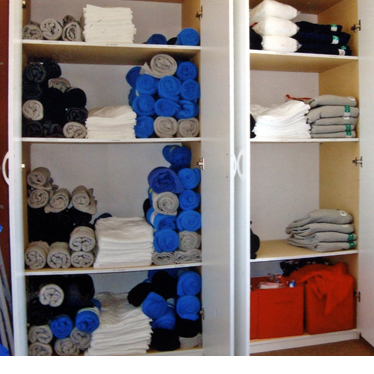
Harmonize
Minimization of conflicts and rules
Welcoming environments support survivor-centered advocacy.
Strategies that minimize power differentials, such as
providing similar chairs for advocates and residents, can encourage mutually respectful relationships.
Art can also bring beauty and inspire both staff and residents, and communicate cultural inclusion.
Strategies that minimize power differentials, such as
providing similar chairs for advocates and residents, can encourage mutually respectful relationships.
Art can also bring beauty and inspire both staff and residents, and communicate cultural inclusion.

![A Sense of Peace … from the very first moment I sat down with [my advocate], a sense of peace and safety began to permeate my awareness. From that day forth and through today, my inner light began to flicker and eventually shine again. - survivor at DAWN, Kent, Washington](https://www.buildingdignity.wscadv.org/wp-content/uploads/2012/02/A-Sense-of-Peace.bmp)
 At the Salvation Army Catherine Booth House advocacy office, desks around the edge of the room ensure that advocates and survivors both have access to computer screens and can work collaboratively; advocates do not sit behind a desk with access to info the survivor can’t see for herself.
At the Salvation Army Catherine Booth House advocacy office, desks around the edge of the room ensure that advocates and survivors both have access to computer screens and can work collaboratively; advocates do not sit behind a desk with access to info the survivor can’t see for herself.Advocates can meet resident needs more easily when storage is generous, efficient and conveniently located.
Situating a small storage area adjacent to advocates’ offices facilitates easy access to necessities for residents arriving in the middle of the night or with an immediate need. Secondary storage can be replenished from main storage facilities located elsewhere in the building.
Situating a small storage area adjacent to advocates’ offices facilitates easy access to necessities for residents arriving in the middle of the night or with an immediate need. Secondary storage can be replenished from main storage facilities located elsewhere in the building.


A small closet with clothing in varied sizes has been located in the staff office for immediate access.